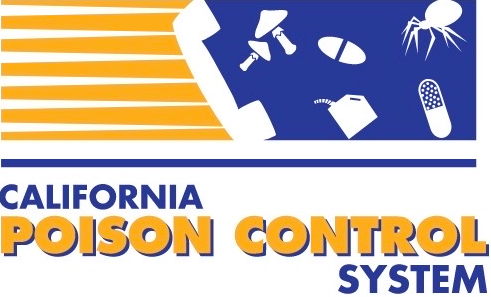By Rais Vohra, MD
Introduction
Organochlorine compounds were introduced in the 1940’s as potent insecticides and pesticides. They offered the advantages of low cost of manufacture, nonvolatile properties, persistent environmental effects, and less toxicity compared to previous pesticides. Their use in the United States has been curtailed in recent decades because of environmental and human health concerns, and lindane was banned in California in 2002 for agricultural and pharmaceutical use. Although less commonly utilized than the organophosphorus compounds, these agents continue to be popular worldwide.
Case presentation
A 3 year old child was brought in to the emergency department (ED) because of a single, self-limited, tonic-clonic seizure. She is an otherwise healthy toddler who accidentally ingested an unknown amount of lindane topical cream in her home. The lindane had been prescribed several years ago to a relative for use as a pediculocide (medication to treat lice infestation). The patient found the old tube of topical lindane under the kitchen sink and decided to “explore” the product by ingesting an unknown amount.
On arrival to the ED the child was post-ictal, but had stable vital signs: pulse 120 bpm, respirations 25 per minute, temperature 37.5 C, and oxygen saturation 100% on room air. She was minimally responsive to voice and withdrew to pain. Although she had deep respirations, the remainder of the physical examination was normal and her neurological examination nonfocal except for her post-ictal state. All laboratory evaluations were within normal limits. The child was observed in the ED for 6 hours during which she became increasingly awake and responsive, and was discharged without evidence of further toxicity.
Questions
- What is the mechanism of toxicity of lindane and the organochlorines?
- What are some common life-threatening effects of lindane toxicity?
- What are key treatments in poisoning by lindane?
Epidemiology
The historic legacy of organochlorine pesticides is both impressive and controversial. These compounds - of which DDT (dichloro-diphenyl-trichloroethane) is perhaps the most well recognized - essentially revolutionized agricultural yields in the mid-twentieth century. At the same time, DDT dramatically decreased the transmission of mosquito and tick-borne illnesses like malaria and typhus in many parts of the world. It is estimated for example, that DDT saved 50 million lives from 1940 to 1953 and prevented an additional 1 billion cases of human infectious disease. After the publication of Silent Spring, Rachel Carson’s book about the damaging environmental persistence of DDT, usage was widely scrutinized and eventually abandoned in many countries. Today, although banned in the United States, DDT is still effectively used for control of malaria vectors in some parts of the world. Lindane and hepatochlor are prohibited from use in California and severely restricted throughout the United States. There is also an occupational risk of exposure to several organochlorine compounds banned from domestic use but still manufactured in the United States for export to other countries.
Pharmacology
The organochlorines are a chemically diverse group of substances. They share a structure consisting of cyclic polychlorinated molecules. The organochlorines are in general non-volatile solids at room temperature, and their common effect on the central nervous system is stimulation. In contrast, most other chlorinated hydrocarbon compounds are gases and liquids and tend to depress central nervous system (CNS) activity and clinically cause sedation.
There are 4 major chemical classes of organochlorine compounds:
- DDT
- Cyclodienes (eg, aldrin, dieldrin and endrin, and chlordecone)
- Lindane and related chlorocyclohexane agents
- Toxaphene and related compounds
Most organochlorines have a “negative temperature coefficient,” meaning they are more toxic at lower temperatures. This property renders organochlorine agents more toxic to cold-blooded creatures such as insects than to mammals and other more complex life-forms. The general mechanism of pesticidal actions of these agents is neurotoxicity that renders insects and other pests unable to move or breathe. Most organochlorines are formulated with petroleum products as solvents or carrier substances.
Organochlorines tend to be well-absorbed orally, and all undergo extensive hepatic metabolism once absorbed. Skin absorption is variable: lindane and cyclodienes demonstrate excellent dermal penetrability, whereas DDT and toxaphene are poorly absorbed through skin.
Lindane is the most well studied organochlorine with regard to pharmacokinetics, and demonstrates how different anatomic sites show variability in absorption characteristics. For example, 9% of a topically applied dose of lindane is absorbed from the skin of the forearm, while almost 100% can be absorbed through the thinner skin of the scrotum and perineum. Studies also show that younger, malnourished and repeatedly exposed patients are at increased risk for transdermal absorption of lindane and toxicity. One gram of lindane topically can result in seizures in children, and 10 g are considered potentially lethal in adults. Lindane shows a peak serum concentration approximately 6 hours after a topical exposure and the serum half-life is 18 hours to several days due to its lipophilic nature.
After an oral exposure, the organochlorines are internalized rapidly and quickly enter the CNS; subsequently, they redistribute into the blood and adipose tissues, where they can remain for a prolonged duration. Thus, these agents typically demonstrate rapid neurologic symptoms and recovery, but a prolonged total body persistence.
Most organochlorines undergo hepatic metabolism. Some agents can become metabolized to epoxides or other active compounds as a result of this metabolism (for example, aldrin is converted in the liver to dieldrin, another active organochlorine agent). The organochlorines also induce hepatic cytochrome p450 metabolic enzymes in humans as well as insects, and piperonyl butoxide ( a p450 inhibitor) is often added to allow more prolonged insecticidal activity. Most organochlorines are formulated with petroleum products as solvents or carrier substances.
Pathophysiology
The major acute effect of the organochlorine agents is central nervous system stimulation. Several mechanisms seem to contribute to this effect. DDT causes axonal sodium channels to remain open longer than normal, contributing to a general hyperexcitability of nervous tissues. Other organchlorines, such as lindane and the cyclodienes, affect the functions of GABA by antagonizing (inhibiting) the CNS GABA receptors. Each of these mechanisms results in CNS hyperexcitability, resulting in seizures, tremors, paresthesias, ataxic gait and other neurological effects.
Lindane can induce bone marrow and hematologic toxicity after prolonged or repeated exposures. Since most organochlorines contain hydrocarbons or petroleum-based solvents, aspiration pneumonitis is also a possible complication of ingestion of these substances.
Organochlorines resemble other halogen-containing hydrocarbon compounds in their capacity to enhance myocardial sensitization to endogenous catecholamines, potentially triggering sudden cardiac dysrhythmias and cardiac arrest. This syndrome is sometimes called “sudden sniffing death,” because it was originally described in otherwise young and healthy teenagers who had inhaled halogenated hydrocarbon agents to become high, became rapidly stressed, and either abruptly died or developed sudden onset of ventricular dysrhythmias. Since these initial reports, sudden death also has been described following oral ingestions of organochlorines and related halogenated agents.
Clinical presentation
The organochlorines most commonly stimulate the CNS, and symptoms can range from paresthesias to seizures. With large exposures and severe toxicity, status epilepticus with respiratory failure and death can ensue. In addition, nonspecific neurologic symptoms such as nausea, vomiting, headaches, and dizziness can also be seen. Myoclonus, increased deep tendon reflexes and tremors are also reported following toxic exposures.
Some of these agents can cause sudden seizures, without any prodromal symptoms. These include lindane, cyclodienes and toxaphene. These sudden seizures can happen from 1 to 6 hours post-exposure, and the effects can last for days in severe cases.
Lindane (also called hexachlorocyclohexane)
In the past there were many reports of lindane toxicity in children, where it was often used as a pediculocide. Young children seem to be especially vulnerable to transdermal lindane toxicity for a combination of reasons: immature liver enzymes, increased skin surface area-to-weight ratio, low cost and wide-spread availability of lindane, and inappropriate skin application. Lindane formulations in concentrations of 1% or higher are especially dangerous, and can cause seizures in young children even after a single inappropriate or excessive application. Repeated exposures and malnutrition also increase the risk of toxicity. In addition, nausea, vomiting, cyanosis or pallor, and hypotension can also be seen with toxic exposures. There are also reports of hematologic toxicity (pancytopenia and aplastic anemia) with repeated exposures to lindane.
Chlordecone and occupational organochlorine toxicity
The most well-documented cases of chronic toxicity from organochlorine agents came from an epidemic of poisoning among workers in a chlordecone (Kepone) manufacturing site in Hopewell, Virginia in 1974-5. These workers experienced a constellation of clinical effects (sometimes still called the “Kepone shakes”), consisting of prolonged tremulousness, exaggerated startle responses, generalized weakness, oculomotor disturbances, ataxia, hepatitis, rash, weight loss and sperm dysmotility. These effects lasted for several years, after which Hopewell workers demonstrated improvement in concordance with decreasing serum and tissue levels of chlordecone.
Other associations and clinical consequences of chronic organochlorine toxicity seem to be less obvious. For example, DDT and other agents are estrogenic, but there is no clear association with breast cancer despite extensive reviews on this subject.
Diagnosis
The nervous system manifestations, signs, and symptoms described above are the most common clinical effects demonstrable after acute exposure to these agents. The differential diagnosis of this presentation includes other causes of seizures such as CNS infection and proconvulsant toxins such as theophylline, amphetamine derivatives, cocaine, camphor, INH and tricyclic antidepressants.
A noxious, turpentine-like odor is described with toxaphene. Endosulfan imparts the smell of rotten eggs due to its high sulfur content. Many of the organochlorine agents are radio-opaque, so a plain radiograph of the GI tract may be helpful in estimating the dose ingested in select cases where organochlorine oral exposure is suspected.
Definitive laboratory confirmation of the presence of organochlorines in the serum, urine or tissues can be done using gas chromatography, but this process typically takes days and is not useful in the acute management of these agents. Where lindane is suspected as a toxin, serum concentrations can help to guide management and prognosis. A level of 0.02 to 0.20 mg/L is indicative of a toxic exposure with higher levels at greater risk for seizures. Poison center and toxicologist consultation is recommended for any suspected ingestions when specific laboratory testing for organochlorine levels is ordered. It is important to note that specialized testing is not readily available so test results may be delayed for days to weeks after specimens are collected and sent; clinical signs and symptoms are therefore paramount for diagnosis and management of these ingestions.
Treatment
Close attention must be paid to the airway and respirations of any patients in whom organochlorine toxicity is suspected. In cases where transdermal penetration is the mechanism of exposure, it is necessary for health care providers to remove the patient’s clothing and carefully discard them in well-sealed pouches using personal protective gear. After exposure, the patient’s skin should be thoroughly decontaminated using soap and water.
Oral exposures are difficult to manage because the risk of seizures and subsequent CNS depression precludes the use of activated charcoal in many cases. However, in cases that present within an hour of ingestion and in which the patient is still asymptomatic, a dose of activated charcoal may help prevent absorption from the intestines and enhance elimination from the GI tract. As with other toxic agents, the use of activated charcoal in organochlorine ingestions has not been studied extensively.
One previously described unique method of decontamination and elimination of systemic organochlorines is the enteral use of resins or lipophilic compounds that can sequester the toxin in the GI tract. Cholestyramine and olestra (a non-absorbed fat substitute) have both been utilized for this purpose. Cholestyramine decreased the half life of chlordecone in the Hopewell epidemic, and animal studies support the use of olestra as an elimination adjunct. Although these agents may theoretically enhance the elimination of organochlorines after chronic exposures, they have not been studied in acute poisonings.
When seizures occur from organochlorine compound toxicity they should be managed using standard care procedures for protecting the airway and maintaining oxygenation. General anticonvulsants such as benzodiazepines (with barbiturates or propofol as second line agents) should be used in cases of status epilepticus. As with other toxin-mediated seizures, phenytoin is usually ineffective for organochlorine-induced seizures.
It is important to monitor for and recognize the dysrhythmogenic effects of organochlorine agents. This complication warrants a different approach to ventricular dysrhythmias than standard ACLS techniques. Instead of epinephrine as first line therapy, beta-adrenergic blocking agents and magnesium are administered initially for organochlorine-induced ventricular dysrhythmias in order to diminish the effects of endogenous catecholamines on the highly irritable myocardial tissue. Patients who develop ventricular fibrillation should still undergo defibrillation, after which beta blockade and magnesium should be administered to prevent recurrent dysrhythmias.
Discussion of case questions
- What is the major mechanism of toxicity of lindane and other organochlorines?
Lindane, like other organochlorine pesticides, is excitatory to the brain and induces seizures, tremors and other stimulatory neurologic signs. Lindane antagonizes GABA receptors, while other classes of organochlorines enhance axonal depolarization by maintaining sodium channels in their open states. - What are some common life-threatening effects of lindane toxicity?
Seizures and status epilepticus have occurred with severe lindane overdose after both oral and topical application. In some chronic exposures, bone marrow toxicity with depression of any or all cell lines has been described. Because organochlorines are co-formulated with petroleum-based solvents, aspiration pneumonitis from these hydrocarbon solvents is also a potential complication. Organochlorines can increase the risk of sudden cardiac death due to myocardial sensitization to epinephrine and other catecholamines. - What are the key treatments in poisoning by lindane?
Control of the airway and prevention of seizures are the major management priorities. When the route of exposure is transdermal or ocular, copious irrigation and decontamination should be initiated immediately. Evaluating for recurrent or chronic exposure, and ruling out other, more rare complications are secondary treatment goals. Gastrointestinal elimination may be enhanced with activated charcoal or cholestyramine.



